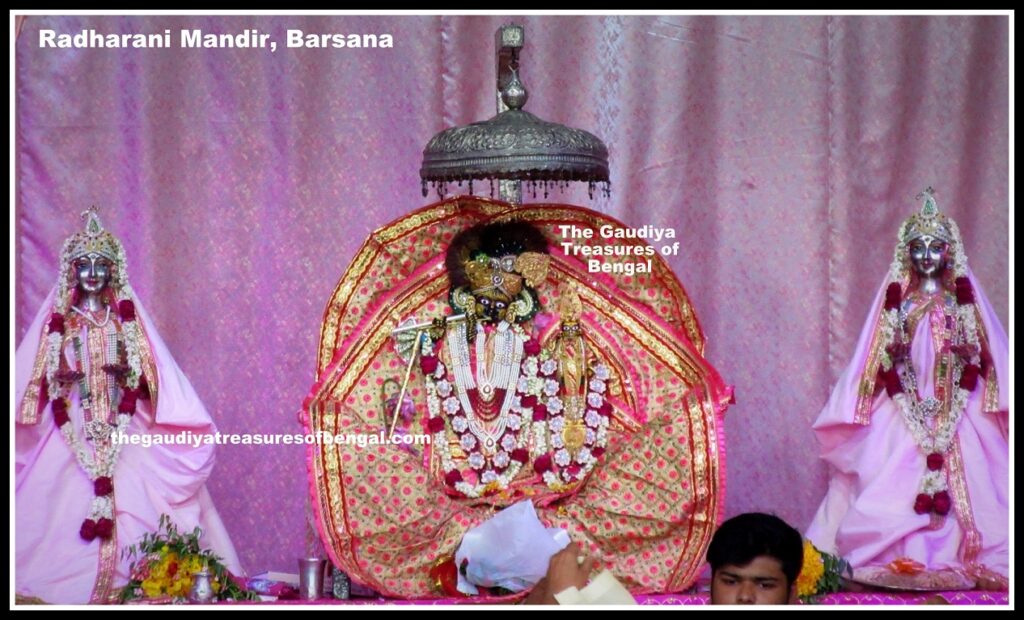
Radha Rani Mandir or the Sriji temple, situated on top of a hillock here at Barsana, houses captivating deities of Sri Radha and Krishna. Also known as ‘Ladli Mahal’, Barsana Radha Rani Mandir is a significant holy site of Vraja Mandala. Barsana, also known as Vrishabhanupur (named after Vrishabhanu Maharaja), is a village situated about 41 Kilometers northwest of Mathura. It is where Radha and Krishna manifest their eternal pastimes. Vrishabhanu Maharaja was a close friend of Nanda Maharaja, Krishna’s father. When Nanda Maharaja shifted his family from Gokul to Nandgaon, out of the fear of Kansa’s atrocities, Vrishabhanu Maharaja also shifted along with his family from Raval to Barsana. Padma Purana states that Lord Brahma had previously performed severe austerities with the desire to witness the pastimes of Radha and Krishna and obtain the dust of their lotus feet upon his head. Being pleased with Brahma, Krishna granted him the boon to manifest himself as mountains here at Barsana. As a result, this mountain is also known as Brahmagiri. Brahmagiri has four different peaks representing the four heads of Lord Brahma. There is a second hill situated right next to Brahmagiri known as Vilasa Parvata or Vishnu Parvata which is considered to be a manifestation of Lord Vishnu. The four peaks of these hills are – Bhangarh, Managarh, Danagarh, and Vilasgarh. Bhangarh (the highest of the four peaks) is where Vrishabhanu Maharaja had established his palace and where Radharani manifested her childhood pastimes. Bhakti Ratnakara describes the residence of Vrishabhanu Maharaja as follows –
Vrishabhanu-pura e, Barsana nama koy
Parvata samipe Vrishabhanura aloy
Apurva parvata – etha Vrajendrakumara
Karilena Dana-lila anya agochara
(Bhakti Ratnakara)
–
Behold Vrishabhanu-pura, which is also known as Barsana. Near this mountain is the residence of Vrishabhanu Maharaja. On this exotic mountain, Vrajendra Kumara Sri Krishna performs His dana-Lila pastimes concealed from the view of others.





